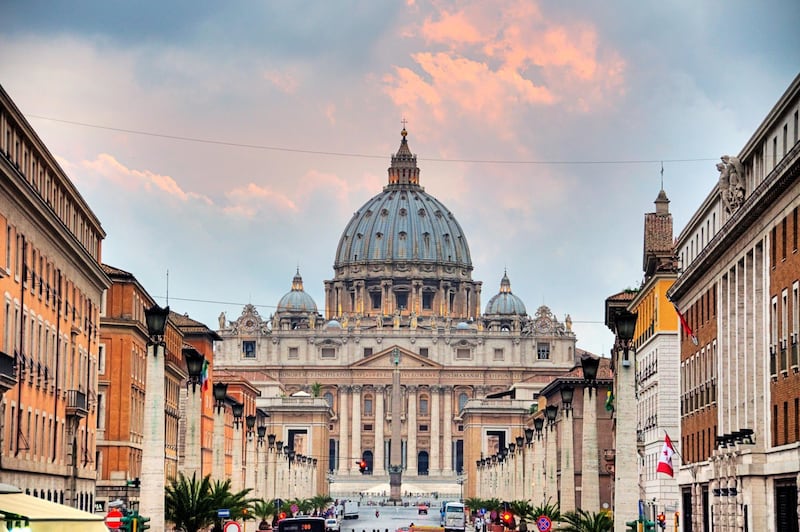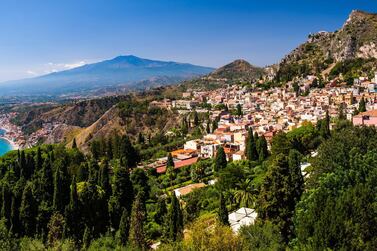The Vatican City is hard to miss – its centrepiece, St Peter's Basilica, can be spotted from afar, towering over neighbouring buildings. It is a reminder to visitors that they've crossed the invisible confine that separates Rome from the ecclesiastical state.
To reach the Basilica, one need only walk down Via della Conciliazione, a broad road flanked by Fascist-era street lamps and centuries-old buildings. At its end, St Peter’s Square spreads out in a circle under the imposing dome of its eponymous church. But this wasn’t always the quickest route to the Basilica.
Before dictator Benito Mussolini ordered the construction of Via della Conciliazione – demolishing historical buildings and small alleys in the process – a narrow path, built atop what was originally a defensive wall, served as the most direct and safest line into the Catholic enclave.
Il passetto – Italian for small path – was built by Pope Nicholas III in the late 13th century. Some 10 metres high and just under one kilometre long, the open-air passage provided the perfect escape route from the papal residence to the fortified building of Castel Sant'Angelo, which sits beside the Tiber river, a short hop from the Vatican City.
But it wasn’t until 1377 that the secret expressway between Rome and the Vatican became critical. The Pope’s return to the city following a self-imposed exile in France and his decision to take up residence in the Basilica ruffled many a feather – but il passetto provided a safe exit strategy from outside attacks.
In 1494, Pope Alexander crossed into Rome through the passetto, when Charles VIII of France invaded the city. Less than half a century later, in 1527, Pope Clement VII also darted through the dark pathway to escape the brutal siege of Rome.
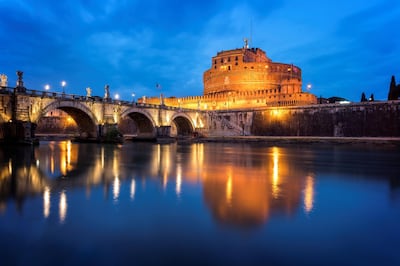
He hunkered down in Castel Sant'Angelo and survived the attack. In the year 2000, coinciding with the Church's Great Jubilee celebrations, the stone floor and bare walls of il passetto opened to the public. Curious visitors streaming in from all corners of the world were finally able to retrace the centuries-old route into the only city-state entirely designated a Unesco World Heritage Site. Walking down the passetto, one can imagine what it may have been like for a 16th century pope fleeing probable lynching. Today, il passetto has been momentarily closed to the public while it is being renovated, to avoid its collapse.
But while the public waits for the reopening of this enthralling little corner of Vatican history, the city's innumerable sites are just a stone's throw away. Before you visit, take a look at our list of 10 interesting and quirky facts about the Vatican City.
How many tourists is too many tourists?
Though only 44km-squared in area, the tiny state overflows with history and intrigue – from its Biblical links (the Basilica is thought to have been built atop the tomb of Jesus's apostle St Peter) to priceless collections of art, including Michelangelo's Creation of Adam in the Sistine Chapel.
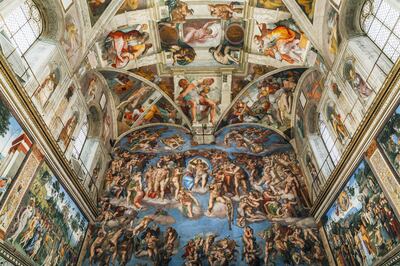
It's no surprise, then, that the Vatican attracts more tourists than anywhere else in the world, with more than six million each year. In 2018, the Vatican Museums considered putting a cap on the number of visitors, fearing that overcrowding could lead to a stampede throughout the 11km-long museum corridors. Even in the scorching Italian summers, the number of daily visitors can reach more than 30,000. Though awe-inspiring, the museum passages can easily become claustrophobic, particularly when they are at maximum capacity. Some tourists are known to have had panic attacks or fainted.
A city of foreigners
Home to just under 1,000 residents and with no births inside the city, the Vatican is the only place in the world with a 100 per cent expatriate population. Interestingly, the UAE is just second in line, with 88.4 of its population born outside the country.
Last week, during his three-day trip to Abu Dhabi, Pope Francis used his Homily to address the challenges of living abroad. “It is most certainly not easy for you to live far from home, missing the affection of your loved ones, and perhaps also feeling uncertainty about the future,” the pontiff said. “But the Lord is faithful and does not abandon his people.”
Latin is the official lingo
While Italian is the Vatican’s most commonly used language, Latin is the official one. Until 2011, ATMs inside the enclave had Latin language options – t
he machine’s opening screen read: Inserito scidulam quaeso ut faciundam cognoscas rationem. Quite literally: I ask that you insert [your] card in order that you come to understand the method needing to be used.
Unfortunately, the quirky setting was removed eight years ago, for unknown reasons.
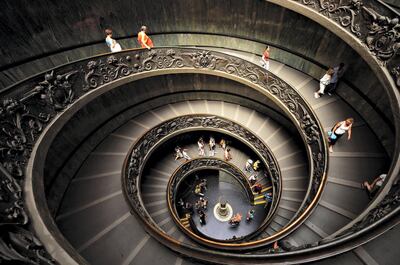
UAE-Vatican ties
It wasn't until 2007 that the UAE and the Holy See established official diplomatic ties. The arrangement – made to strengthen international co-operation between the two – was followed a year later by the first high-level delegation. Former speaker of the Federal National Council, Abdul Aziz Al Ghurair, visited the Vatican in 2008 and met with Pope Benedict XVI. This in turn paved the way for last week's historic visit by Pope Francis to Abu Dhabi.
The Swiss Guard
Visitors shouldn't be fooled into thinking the colourful, joker-like forces manning the papal resident are merely ceremonial. The Pontifical Swiss Guard is one of the world's most efficient and highly skilled military forces. Established in 1503, the members of the Swiss Guard were employed by Pope Julius II as his personal mercenaries, or body guards. Today the guard is comprised of 135 men – all of whom have to be Swiss, Catholic and at least 1.74 metres tall to be admitted.
Passport stamp
Unlike other independent enclaves, such as Andorra, the Vatican doesn’t offer a passport stamp. Visitors are free to walk in and out of the tiny state as many times as they wish, and no trace of their journey will be documented.
Pope Joan
A legend to some, a historical figure to others, Pope Joan is thought have been the first and only female to have ever ruled the Catholic Church. She did so by disguising herself as a man. She headed the church for a couple of years during the Middle Ages, before giving birth and dying shortly afterwards. Today, most historians dismiss Joan as a fictional character. But for many, it is still an intriguing part of an institution steeped in patriarchy.
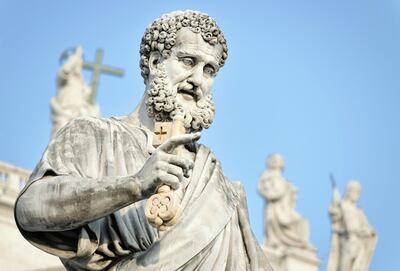
Vatican Athletics
In January, 60 Holy See runners – including Swiss Guards, priests, nuns and pharmacists – became the first accredited members of the Vatican Athletics, with the aim of competing in the Olympics. The Church has a long-standing tradition of promoting sports as an instrument of peace and solidarity. In 1972, they founded the Vatican City national football team. Their first match, in 1985, was against a representative of Austrian journalists. The Vatican won 3-0.
The shortest railway in the world
The Vatican City isn’t just the smallest state in the world, it also houses the shortest national railway system in the world. The main tracks of the Ferrovia Vaticana, or Vatican Railway, are just 300 metres long and were built under the reign of Pope Pius XI.
The construction of the tracks and station followed the signing of the Lateran Treaty in 1929, in which the Italian government recognised the Vatican as an independent state.
The station opened in 1934 and connects the Vatican to San Pietro station, just outside the Vatican walls. Thanks to an initiative by Pope Francis, tourists can now buy tickets for the train.
Something to write home about
The Vatican post office is ranked among the world’s best. Founded in 1929, more letters are sent each year from its postcode than anywhere else. In fact, many Italians are said to make the trip to Vatican City just to use the service.
